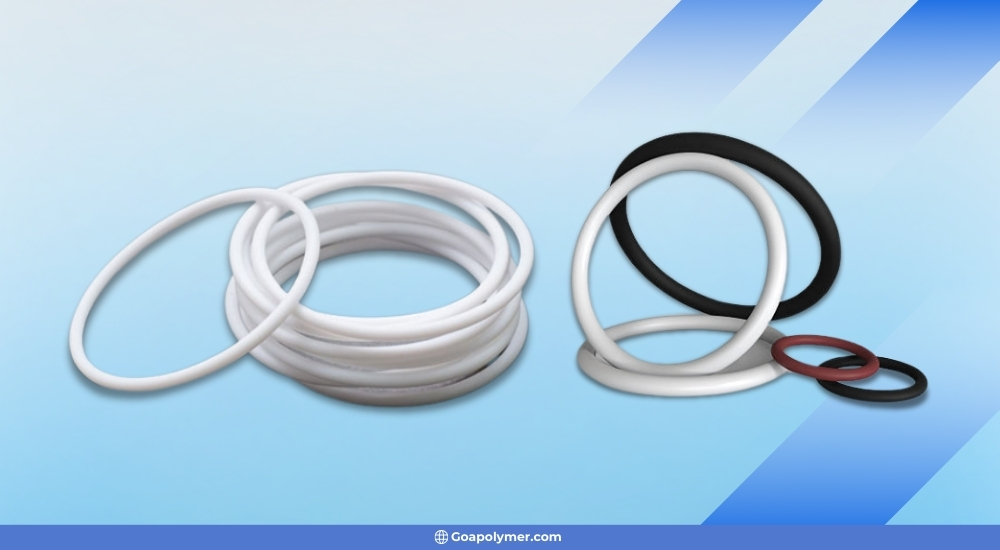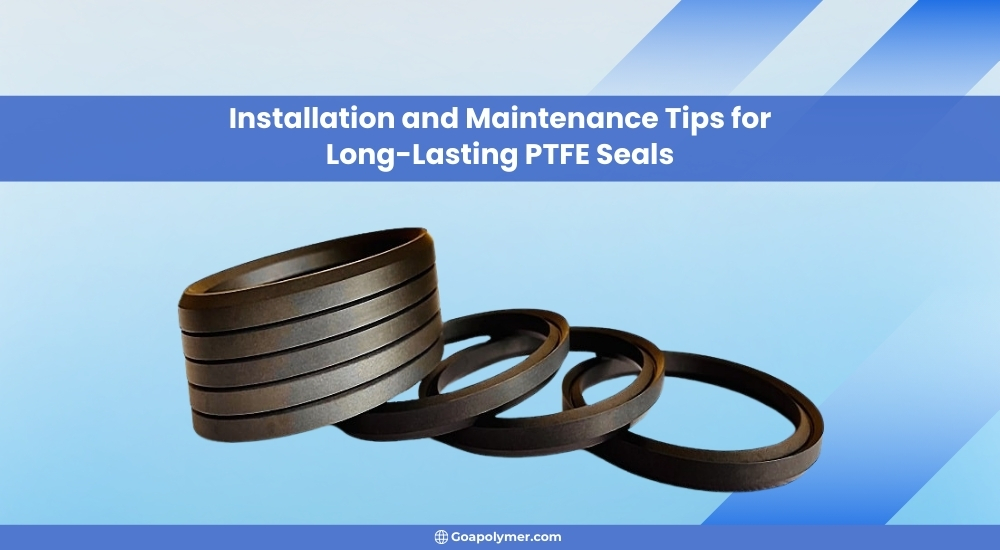PTFE seals are essential in several industries, including the automotive industry and chemical plants. PTFE stands for polytetrafluoroethylene, which is a high-performance material with exceptional durability and chemical resistance.
This material is highly impervious to temperature, and thus, the utilization of PTFE seals makes them highly important in extreme environments. Notwithstanding, the installation and legitimate support of these seals guarantee they keep going for quite a while and work successfully. In this blog, we’ll cover best practices on the most proficient method to introduce and keep up with PTFE seals.
What is PTFE and Why is it Used for Seals?
PTFE is an industrial plastic recognized mainly for its use in products such as non-stick cookware. But its primary industrial use is creating seals and gaskets. It is a very resilient plastic. It doesn’t react with water. So it withstands high temperatures. This is why most applications requiring high wear resistance of the seal demand its use.
Seals use PTFE for gaskets and washers. It stops leaks between machinery parts. This prevents losses among the components.
Types of PTFE Seals
Before the installation and maintenance tips, note that there are different types of PTFE seals.
- PTFE Gaskets: The flat types of seals are usually applied to fill the gaps between two mating surfaces. These occur in piping, machinery, or tanks. They are provided to prevent fluids or even gases from leaking.
- PTFE Washers: These are ring-shaped seals. They fill the space between a bolt and a surface to ensure a proper seal. They are used to avoid leakage in several applications, such as electrical or mechanical systems.
- PTFE Piston Seals: These are high-execution fixing parts utilized in water-driven and pneumatic chambers. They limit rubbing while at the same time giving a compelling seal between the piston and the chamber bore. PTFE piston seals guarantee smooth movement, forestall spillage, and upgrade the sturdiness of the framework, making them ideal for high-tension and high-temperature applications.
- PTFE Lip Seals: These are dynamic seals designed to diminish erosion and wear in turning and responding applications. They give fantastic synthetic opposition and work really in high-speed and high-temperature environments. PTFE lip seals are generally utilized in aviation, auto, and modern hardware to forestall liquid spillage and pollution.

The Right Installation Techniques for PTFE Seals
Correctly installing PTFE seals is the only way to achieve efficient performance. A poor seal can cause leaks and equipment failures. This leads to costly repairs and downtime. Follow these steps for proper installation:
- Prepare the Sealing Surface: Before applying the PTFE seals, check for any dirt and dust. If there are any harmful practicals present, the seal will not fit correctly. That’s why before fitting the seal, you have to clean the surfaces.
- Choose the Correct Seal Type: There are also different kinds of PTFE seals, like PTFE gaskets, washers, and O-rings. You should ensure the right size and type of seal for your application. A gasket might be needed to fill large gaps between mating surfaces. Washers are used to seal bolt and nut connections. Proper sizing helps avoid leaks and premature seal failure due to improper sizing.
- Use Proper Tools: Proper installation will take a lot of time with the proper tools. Use a torque wrench to tighten any fastener holding the PTFE gasket or PTFE washer. Over-tightening will damage the seal. Under tightening may cause leaks.
- Avoid over-tightening: The most common mistake in installing fasteners is over-tightening. PTFE is a soft material that can give in to excessive pressure and deform over time, destroying the seal. Manufacturers set limits for specific parts.
- Correct Alignment: Properly aligning the PTFE seal will help prevent leaks. Misaligned seals may make the seal rub unevenly, or they may not seal adequately, which brings about leaks. Check the irregularities of the seal and confirm that it sits perfectly on a surface it will seal.
Maintaining PTFE Seals for Longevity
Once installed, it requires maintenance and checks on performance. Regularly check PTFE seals. This ensures their long, perfect use. Proper care will ensure the durability of PTFE gaskets in extreme environments. This will prevent costly repairs and downtime. These are some excellent tips for taking care of PTFE seals:
- Regular inspection of seals
- Check for Leaks
- Keep Seals Clean
- Check Operating Conditions
- Replace Damaged Seals Promptly
Conclusion
Properly installing and maintaining PTFE seals would ensure their long-term performance. With the right installation and upkeep, you can incredibly broaden the existence of PTFE gaskets, washers, and different seals. PTFE seals are an incredible decision for requesting businesses. They are tough in outrageous environments and oppose synthetics and high temperatures. They give solid, durable fixing arrangements.
Keep the PTFE seals in top shape. Follow the blog’s tips for installation. Additionally, do ordinary upkeep checks. The PTFE gaskets, washers, or O-rings will perform well for quite a long time. Appropriate consideration will expand their adequacy and forestall expensive margin time or fixes.
Frequently Asked Questions
PTFE seals are more durable and resistant to extreme temperatures and harsh chemicals compared to rubber seals, making them ideal for high-performance and high-pressure applications.
Yes, PTFE seals are food-safe and commonly used in the food processing industry due to their non-reactive properties and resistance to high temperatures.
The lifespan of PTFE seals depends on the operating conditions, but they can last many years when properly installed and maintained, especially in extreme environments.
Yes, PTFE seals can be reused as long as they are not damaged during installation or operation. However, regular inspection is important to ensure they remain effective.



